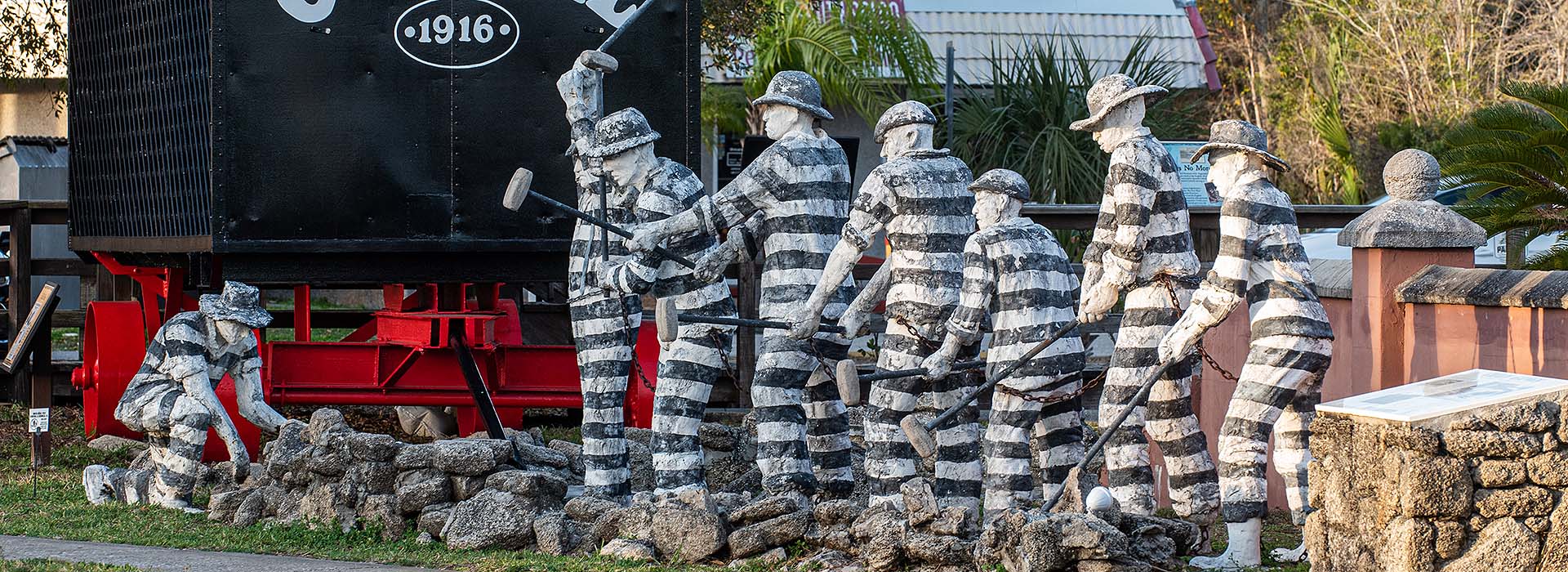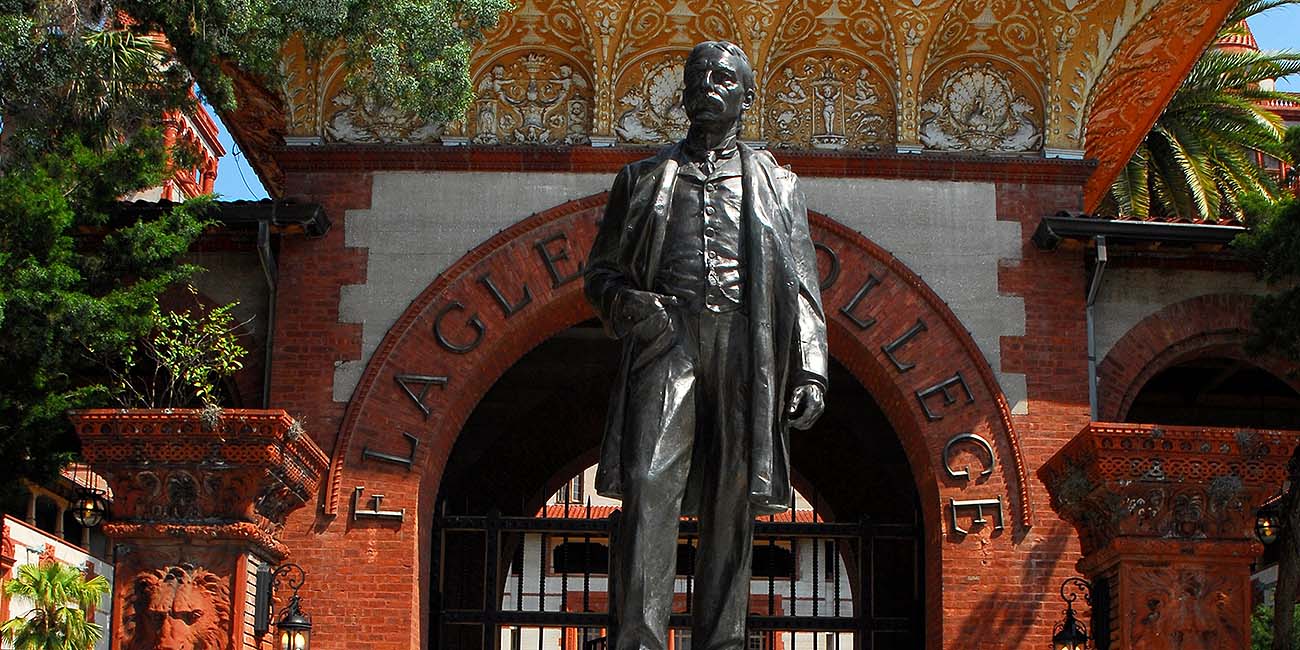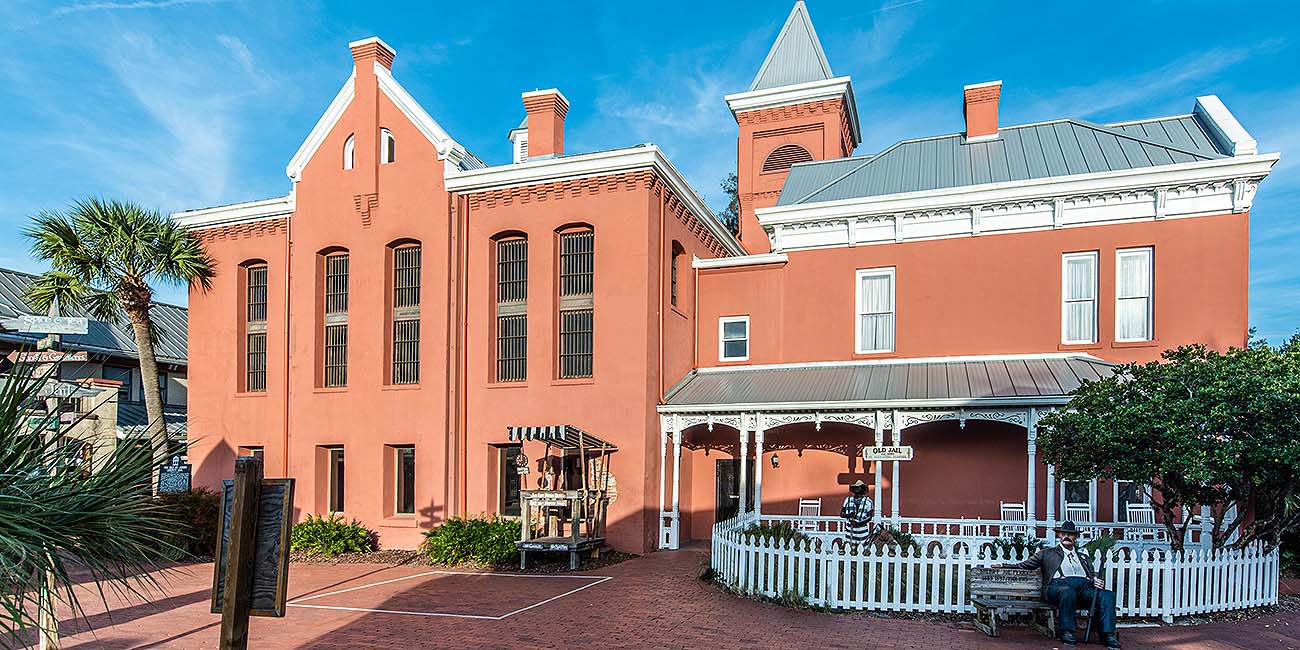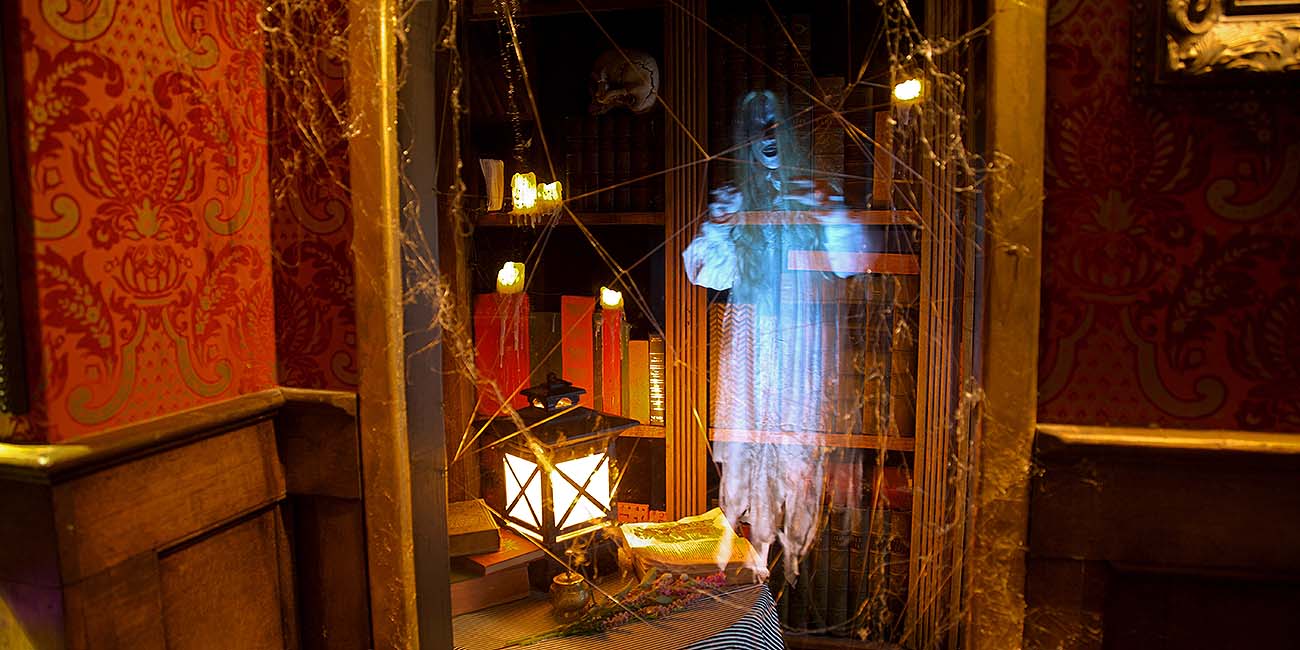Inmates at the Old Jail were subjected to a range of punishments that reflected the penal philosophy of the time. These included solitary confinement in small dark cells, grueling physical labor, and the ultimate penalty of execution by hanging for the gravest offenses, underscoring the stringent penal practices of the era.
Inmates at the Old Jail St. Augustine

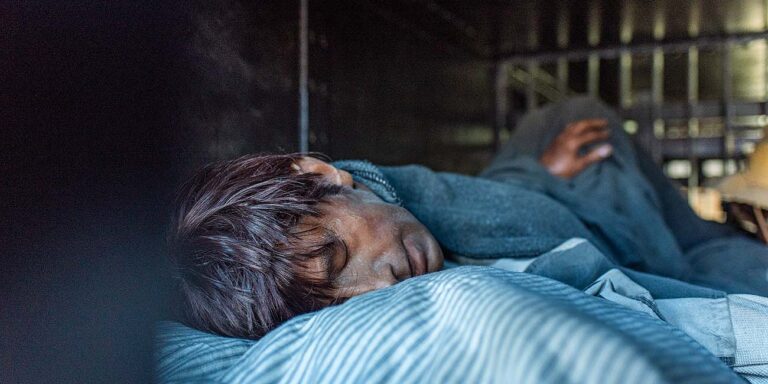
Nestled in the historic heart of St. Augustine, Florida, the Old Jail stands as a captivating testament to the city’s multifaceted past, offering a particularly poignant window into its often-overlooked prison infrastructure. Built in 1891 by the renowned industrialist Henry Flagler, this unique Florida prison was intentionally designed to deceive the eye. Its grand Victorian architecture, meticulously crafted to mirror the elegant homes that surrounded it, cleverly masked its true purpose as a place of incarceration. This architectural subterfuge was a strategic move ensuring that the city’s visual appeal remained intact while still addressing the necessary, if less glamorous, aspects of maintaining law and order.
Today, the Old Jail has been transformed into a living museum, inviting visitors to step back in time and explore the compelling stories of those who were once confined within its walls. Through exhibits, artifacts, and immersive experiences, the museum offers a profound and often moving glimpse into the lives of the Old Jail’s former inmates. This unique approach to historical preservation allows visitors to connect with St. Augustine’s past on a deeply personal level, fostering a greater understanding of the complexities and challenges faced by the city’s residents throughout the years. In essence, the Old Jail serves as a bridge between the past and the present, offering a unique educational experience that brings alive the history of the former St. Augustine prison.
History and Architecture of the Old Jail

The Old Jail stands as a striking example of Romanesque Revival architecture, showcasing robust masonry, dramatic round arches, and a unique asymmetrical façade that commands attention.
These design choices were deliberate, projecting an image of dignity and stability that mirrored the city’s aspirations for progress and order during that era. The imposing exterior, with its intricate details and solid construction, aimed to instill a sense of awe and respect for the law.
However, stepping inside reveals a stark contrast that sends a shiver down the spine.
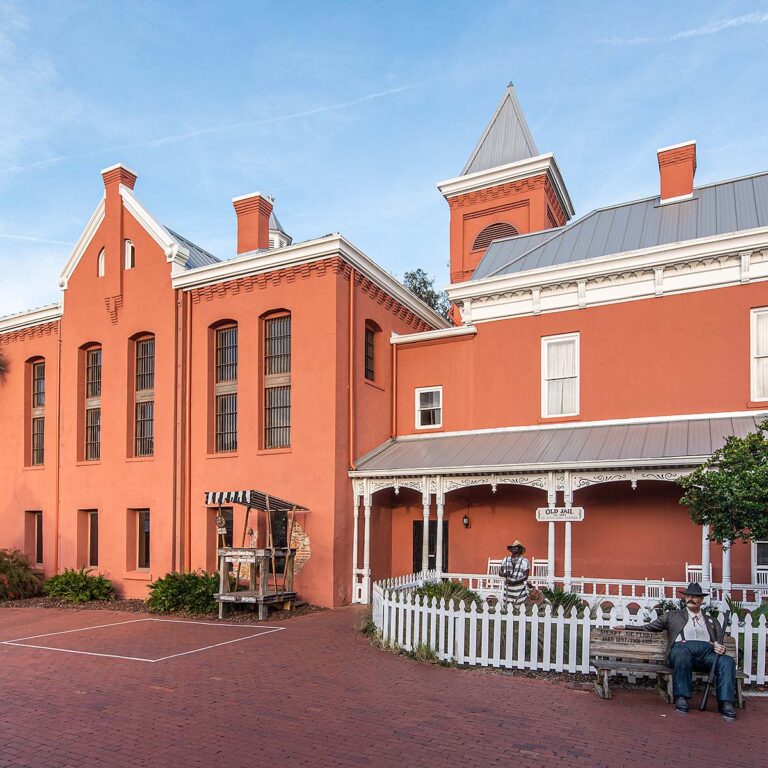
The St. Augustine prison’s interior tells a different story altogether, one of confinement and hardship. Its austere utilitarian layout, dominated by rows of iron-barred cells and cold, unforgiving concrete walls, paints a picture of stark reality. This juxtaposition between the building’s outward beauty and its harsh internal reality speaks volumes about the complex role the Old Jail played in the community. It served not only as a stark deterrent to crime, a visual reminder of the consequences of transgression, but also as a testament to the city’s architectural ambition and its desire to create structures that were both functional and aesthetically pleasing, even if their purpose was grim.
History of Inmates at the Old Jail

Throughout its operational years, the Old Jail in St. Augustine housed a wide array of individuals, ranging from petty criminals to some of the most notorious felons in the region. The jail was infamous for its execution gallows, where a total of eight men met their end, marking it as a place of severe retribution. Several Old Jail inmates have fascinating histories, for example: Sim Jackson, a man who murdered his wife with a straight razor in a crime of passion, and Charlie Powell, a man who loved his wife so dearly that he beheaded the man who was spreading rumors about her.
The capacity of the jail to hold up to 72 inmates often led to overcrowded conditions, illustrating the challenging and severe environment that prevailed. Aside from overcrowding, the punishments the Old Jail inmates faced were also severe. Life within the confines of the Old Jail was a stark and unforgiving reality for its inmates. The penal philosophy of the time was rooted in harsh retribution and deterrence, leading to a range of punishments designed to break the spirit and instill fear.
Solitary confinement was a common practice, where prisoners were isolated in cramped, lightless cells, deprived of human contact, and left to grapple with their own thoughts in the oppressive silence.
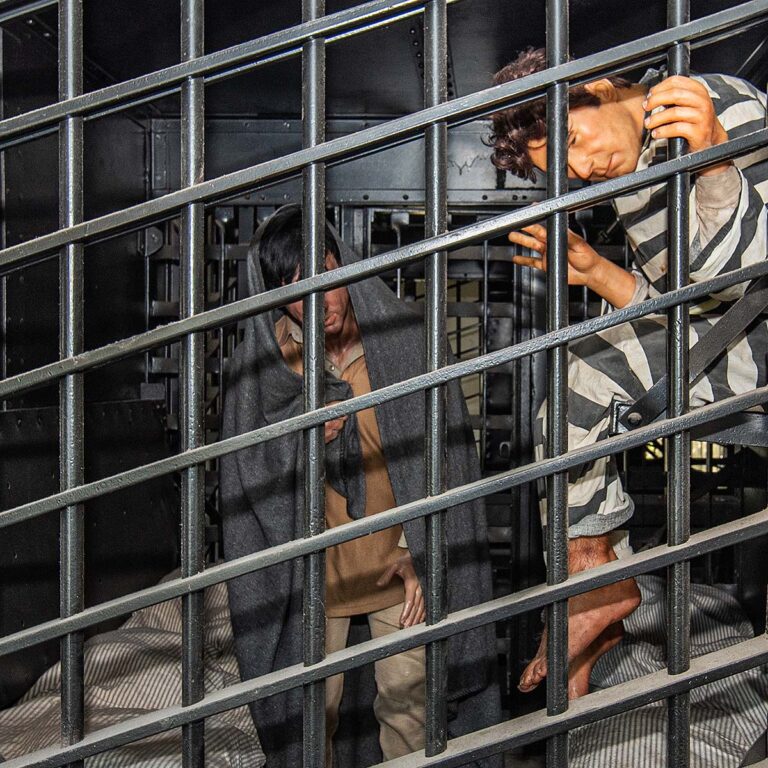
For the most heinous crimes, the ultimate penalty awaited: execution by hanging. The jail’s gallows served as a chilling reminder of the finality of justice in those times. The somber act of capital punishment, carried out within the jail’s walls, cast a long and ominous shadow over the lives of all who resided there, inmates and staff alike.
These harsh practices, while unsettling to modern sensibilities, offer a sobering insight into the stringent penal system of the era. The Old Jail, through its preserved architecture and historical records, stands as a testament to this period, inviting visitors to reflect on the evolution of justice and the complexities of human punishment throughout history.

The Ghost Stories About the Old Jail

Detention centers have long whispered tales of paranormal activity, but few can rival the chilling reputation of the Old Jail. It stands not only as a relic of a bygone era but also as a vortex of spectral energy, drawing countless thrill seekers and paranormal investigators into its haunted embrace.
The Old Jail is shrouded in an eerie ambiance, its very air thick with the weight of untold suffering of former inmates and the guilt they carried with them. Visitors might experience unexplained footsteps through the desolate corridors. It’s enough to send shivers down the spines of even the bravest souls. Ghostly whispers, barely audible yet undeniably present, seem to emanate from the shadows of the cells. Sudden drops in temperature can grip visitors without warning, leaving them with an unshakeable sense of unease. These paranormal manifestations, witnessed by countless visitors and staff alike, are believed to be the restless spirits of former inmates, forever trapped within the confines of their earthly torment.
The Old Jail’s ghostly legends have woven a tapestry of terror, transforming it into a pilgrimage site for those seeking a brush with the supernatural. Whether it’s the spectral figures glimpsed out of the corner of the eye, the disembodied voices that pierce the silence, or the inexplicable cold spots that prickle the skin, the Old Jail offers a uniquely chilling encounter. Its spectral residents, forever bound to their tragic pasts, ensure that the Old Jail remains a place where history and the paranormal converge, creating an experience that lingers long after the visit ends.
The Old Jail Awaits Your Visit

From its imposing Romanesque Revival architecture to the chilling tales of paranormal activity, the Old Jail in St. Augustine stands as a haunting memorial to the countless lives forever altered within its walls. It serves as a stark reminder of the harsh realities faced by those incarcerated during a time when prisons in Florida were places of struggle and suffering. Whether you are drawn to the building’s architectural grandeur, captivated by the stories of its former inmates, or intrigued by the ghostly legends that persist, the Old Jail is a destination that promises to leave an enduring mark, blurring the lines between the historical and the supernatural and inviting you to connect with the profound human experiences etched into the very fabric of St. Augustine’s past.

FAQs

Absolutely. The Old Jail Museum tour allows visitors to explore the actual cells where inmates lived. This hands-on approach lets guests walk through the different sections of the jail, including the general population cells, the maximum security area, and the solitary confinement cells, providing a stark reality of the daily conditions faced by the inmates.
While the historical records confirm eight executions, the total number of inmates who died in the Old Jail, including those from diseases or natural causes, is not fully documented. This gap in the historical record adds an element of mystery to the already intriguing story of the Old Jail.
The Old Jail in St. Augustine wasn’t just a holding place for petty offenders; it served as the final stop for some of the region’s most hardened and dangerous criminals. Within its imposing walls, murderers, thieves and other perpetrators of violent crimes awaited their fate. The jail’s ominous reputation was further solidified by its execution gallows, a grim reminder of the ultimate penalty that awaited those convicted of the most heinous offenses. The stories of these condemned individuals, their crimes, and their final moments, are etched into the very fabric of the Old Jail, adding another layer of darkness and intrigue to its already chilling history.
The Old Jail in St. Augustine, while a captivating historical site, presents certain considerations for families with children. The museum delves into mature themes like crime, punishment, and execution, which might be overwhelming for younger audiences. Additionally, the museum embraces the ghost stories associated with the building, potentially causing fear or discomfort in some children. The realistic setting, with its preserved cells and artifacts, further contributes to a potentially unsettling atmosphere. When deciding if the Old Jail Tour is suitable for your family, take into account your child’s age and maturity level. Older children and teenagers might be better equipped to appreciate the historical context and handle potentially sensitive topics.
